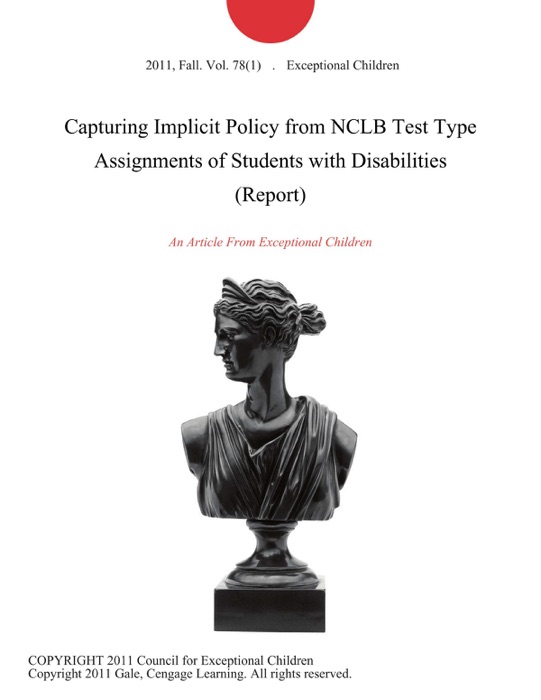[DOWNLOAD] "Capturing Implicit Policy from NCLB Test Type Assignments of Students with Disabilities (Report)" by Exceptional Children # Book PDF Kindle ePub Free

eBook details
- Title: Capturing Implicit Policy from NCLB Test Type Assignments of Students with Disabilities (Report)
- Author : Exceptional Children
- Release Date : January 22, 2011
- Genre: Education,Books,Professional & Technical,
- Pages : * pages
- Size : 239 KB
Description
The No Child Left Behind Act of 2001 (NCLB, 2006) and the Individuals With Disabilities Education Act (IDEA) have become crucial for holding schools accountable for the teaching and learning of all students, including students with disabilities. Most students with disabilities participate in Title I general assessments with or without accommodation, but some students with disabilities participate in alternate assessments. Alternate assessments are intended for students with disabilities who have been unable to participate in general assessments, even with accommodations (Kleinert & Thurlow, 2001). Students with the most significant cognitive disabilities take the alternate assessments based on alternate achievement standards (AA-AAS) which are linked to grade level content standards but differ in complexity and scope (U.S. Department of Education, 2005). States also have the option of developing an alternate assessment based on grade-level achievement standards (AA-GLAS) for students who are capable of performing on grade level but need a format other than the traditional multiple-choice test to demonstrate their knowledge and skills. However, some students with disabilities fall into a gap between the general assessment and the AA-AAS; these students would not be able to show.proficiency on the general assessment and yet are not assessed appropriately by the AA-AAS. In 2007, revised NCLB regulations responded to this situation by giving states the option of providing an alternate assessment based on modified academic achievement standards (AA-MAS; 34 C.ER. [section] 200.1[e]). When the AA-MAS option was first announced by the U.S. Department of Education in 2005, it provoked an immediate, prolonged, and sometimes heated debate over its role in student assessment. The debate centered on how an AA-MAS should be implemented, whether it would distance some students from the general education curriculum, and how to define which students should participate.